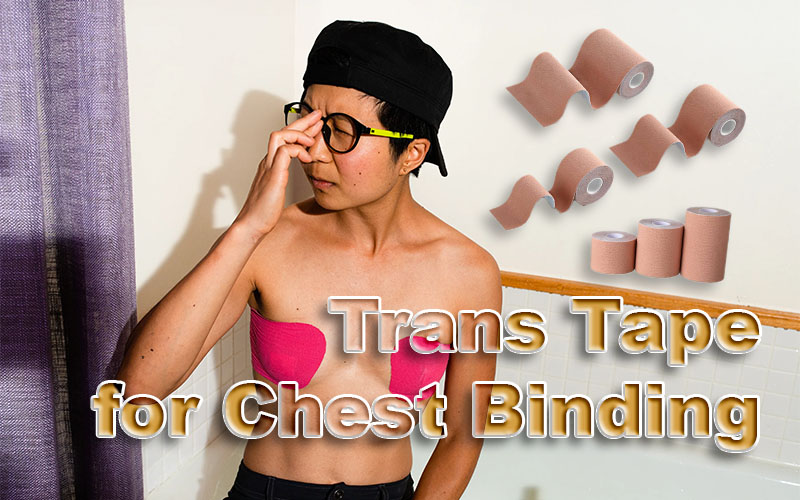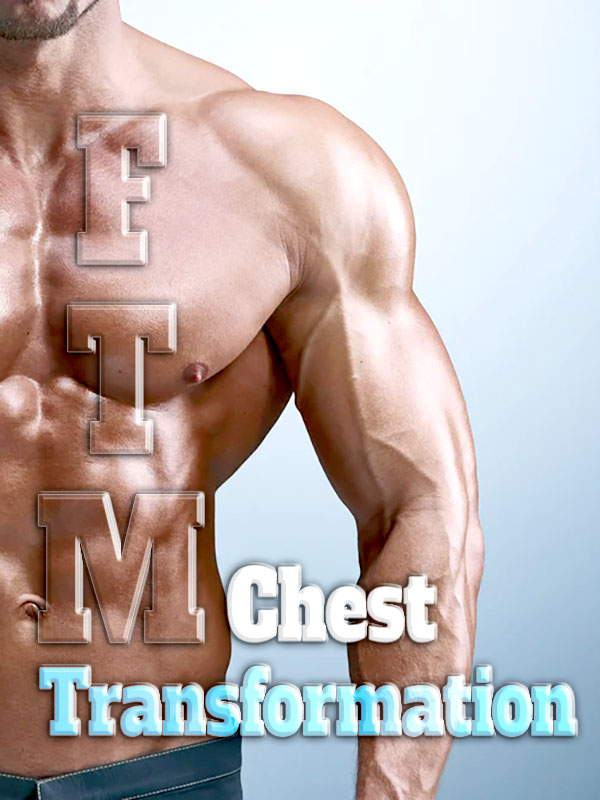What is a chest binder?
A chest binder is a compression material that flattens the chest to create a male-presenting or non-binary appearance.
They are often flexible enough to allow ribcage movements and, consequently, breathing. A binder will often depend on the user’s preference and comfort.
This article will equip you with more information about chest binders, including their importance to trans individuals, types of chest binders, and what to consider when choosing a binder.
The Importance of Chest Binding for Transgender Individuals
Binders come as a heaven-sent gift for all people. However, for transgender individuals, the importance of binders in their lives cannot be downplayed.
Binders help transgender individuals to elevate their confidence.
A binder does the role of a temporary male-female transition by compressing the chest area.
Since breasts are traditionally associated with the feminine, transgender individuals may have a confidence boost upon wearing a binder as it helps affirm their sense of gender.
A binder helps alleviate gender anxiety/dysphoria for transgender individuals.
The relief that a transgender person may feel upon wearing a binder emanates from the freedom that comes with presenting as a male.
A binder will flatten the chest, relieving them of body anxiety.

A binder also helps transgender individuals to care for their mental health.
Binders help transgender individuals to minimize gender dysphoria, anxiety, and depression.
This can be a positive experience that uplifts mood and self-esteem as it helps them feel more in control of their bodies.
Consequently, binders help improve the mental health of transgender individuals.
Consideration when choosing
There are a few considerations one has to make when choosing a binder. They include:
- Binder Size
Even if you crave a smaller chest, choosing an extremely small binder will feel tight on your chest, making it even more uncomfortable for you.
Choosing a binder based on your bra or t-shirt size is not advisable.
To measure your chest size:
- Use a tape measure to measure the fullest part (nipple area) of your chest area. You will need to undress for this.
- Note down the measurement and double-check for accuracy.
- Measure the lower end of your chest below the breast crease.
- Note down the measurement and double-check for accuracy.
- Add the measurements and divide by two. The number represents your chest size.

When measuring your shoulder size, place the tape measure on the outer edge of one chest, running to the other shoulder.
It is important to carry out this step while standing upright with no hunches or shoulders folded. Write down the size.
This is your shoulder size.
Signs that a binder is too tight include breathing problems, skin irritation, bruising, and fracturing at the edges.
You can always ask another to help you measure the correct sizes you need for your binder.
- Raw Materials
A binder material should be sweat-wicking and comfortable. As a result, cotton is the most commonly used fabric.
Cotton is also durable while also offering the option of everyday wear. Do not use duct tape or plastic wrap as binders.
Other people use bandages to bind. This is not advisable as it can lead to breathing difficulties and fluid build-up in the lungs.
It is always advisable to consult your doctor or healthcare provider if you intend to bind your chest.

- Comfort
Binders often come in small, medium, large, extra-large, and more.
Choosing a binder that gives you comfort is the most important element in the binding journey.
Those with large shoulders and chest areas should consider the tanker binder.

What are the Types of Chests Binders Available?
Various chest binders are available depending on user preference and comfort.
- The long-shirt binder version
This is the most commonly used chest binder since it compresses the chest area without mimicking a bra.
These long binders can also be tucked inside the undergarments in the torso area.
They have additional stomach compression features. These are called additional torso compression features.
They can roll up the waist as a flaw, but a belt can hold them in place.

- The short version of Binder
Short version binders are short, reaching the belly area or below the navel.
They are used during the cooler summer days. They are used by transgender individuals who prefer low-cut blouses and t-shirts.
A demerit is that they tend to roll up.

- The extended versions
These binder types can come as a vest-style having a zipper, making wearing and removing it easy.
The extended sports versions come like a sports bra and can be used during physical exercises.
However, it has limited binding capabilities and only compresses the chest area compared to the long and short binder versions.

Where to shop
You can find commercial binders at various online stores, including:
Roanyer has different products for clients, including crossdressers, transgender individuals, FTM, MTF, LGBTQ, strippers, mastectomy patients, strippers, drag queens, female impersonators, drag show performers, entertainers, and more.
It is the largest one-stop shop to get your needs sorted.
You can visit their store and be sure you will never miss binders and other products that give you the look you’ve been thirsty for.

The first garments produced and patented expressly for gender-affirming chest binding are the gc2b binders.
GC2B was created in 2015 by Marli Washington, a transgender individual who studied Arts and Industrial design.
GC2B has a variety of chest binders that you can choose from; for more information about their products and prices, visit their official website.

FLVNT is also another company that makes binders for different skin tones.
The Umber Bare Skin 2.0 is an example of a binder meant to give transgender individuals a shirtless look on the beach.
Other examples of chest binders include Birch bareskin, bone bareskin, oak bareskin, and rose bareskin.

Steps to wear it safely
A binder should be worn safely and accurately. Otherwise, there is a risk of soft tissue injury in the chest if the binder is too tight.
Always remember that a binder aims to safely compress the soft tissue of the chest without imposing pressure on the ribs.

- Wear your binder as you would wear your sports bra.
The typical way to put on your binder is like wearing a sports bra. Put it overhead; lower it down as you wear it through the arm and neck spaces.
It is worth noting that binders may feel extremely tight on the first wear session.
Try this alternative method for those who find the sport-bra-wearing method a little daunting.

- Flip and Wear from Below
Flip the binder inside out, then turn it in the opposite direction. Step into it as you would wear shoes.
Pull the binder upwards towards your torso using the straps until it reaches your chest area.
Worth noting is that the hip area may feel too tight while wearing the binder.
If the binder crackles as though it is tearing, stop the wearing process, as you could damage it.

- Adjust your binder
Once the binder reaches the chest area, wear it through your arms and neck area as it provides a more equalized compression on the chest area.
Adjust your binder to fit your breasts comfortably yet compressively.
In the end, the binder should feel like a bigger sports bra. One should not feel suffocated or squeezed in.
Always wear the binder for 8-10 hours.

How to maintain the chest binder
Maintaining your chest binder is crucial since it makes it last longer, reducing wear and tear.
These are the different ways to maintain your binder;
- Hand wash instead of machine wash
You hand must wash your binder instead of using a washing machine.
When rinsing your binder, cold or warm water is recommended while using bar soap or cloth detergent.
Washing the binder prevents fungal infections from oil build-up and irritated skin.

- Hang up your chest binder to dry
If washed in the evening, the binder should be ready for use by morning.
Hang it in an open place using a hanger.

- Keep your binder on a hanger when you are not wearing
When not in use, hanging your binder in a hanger is important to help it maintain its shape.
Ensure that your binder is evenly spread on the hanger for proper aeration.
- Have more than one binder
Like every piece of clothing that is prone to wear and tear due to overuse, you must have one or more binders for alternative binding days.
Also, this gives you ample time to dry and care for each binder.

Conclusion
Binders come in different sizes to cater to the vast demographic of the Transgender community.
With their ability to flatten the chest, creating an impressionable masculine frame, transgender individuals often assert confidence, experience lessened gender anxiety, and improve mental health outcomes that come with using a binder.
Always ensure that you follow your manufacturer’s manual to care for your binder.
Even so, comfort should always be a priority in your binding journey and experience.
Finding the balance between comfort and compression will make it easier and safer as you go through your binding journey.
Frequently Asked Questions
How long can I wear my binder?

It is recommended that one limits the time they bind their chest.
As a result, do not wear the binder for more than 8 hours continuously.
If more time is needed to use the binder, it should be at most 12 hours.
Those under 18 should wear the binder for at least 6 hours.
Can I wear it during the summer?

Yes. However, with summer and more heat on and around the body, it will likely get sweaty and hot in your binder.
This can always lead to skin rashes due to the moist, warm environment that facilitates bacterial and fungal growth.
Always wear breathable fabrics like cotton over the binder. Also, air out and air dries the binder.
Also, hydrate the body while checking binder comfort during this hot season.
Can I wear a binder while exercising or sleeping?

Wearing a binder when sleeping or exercising is not a recommended practice, and if one is hesitant about body dysphoria during nighttime, alternatives such as using one or two layers of shirts or an A-tank beneath can help while you sleep.
Exercising while having your binder may damage the fabric.

 Basic Packers
Basic Packers Pack & Play
Pack & Play STP
STP
